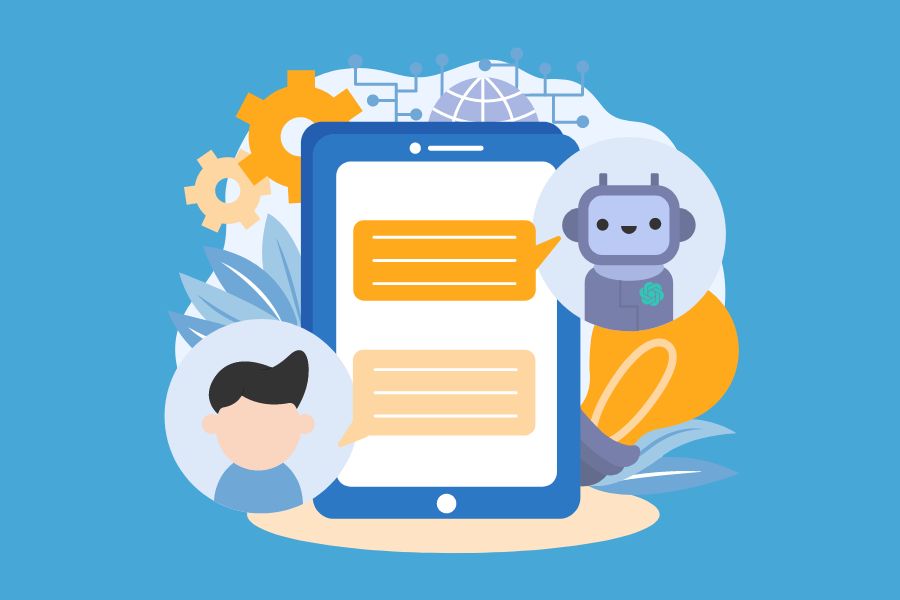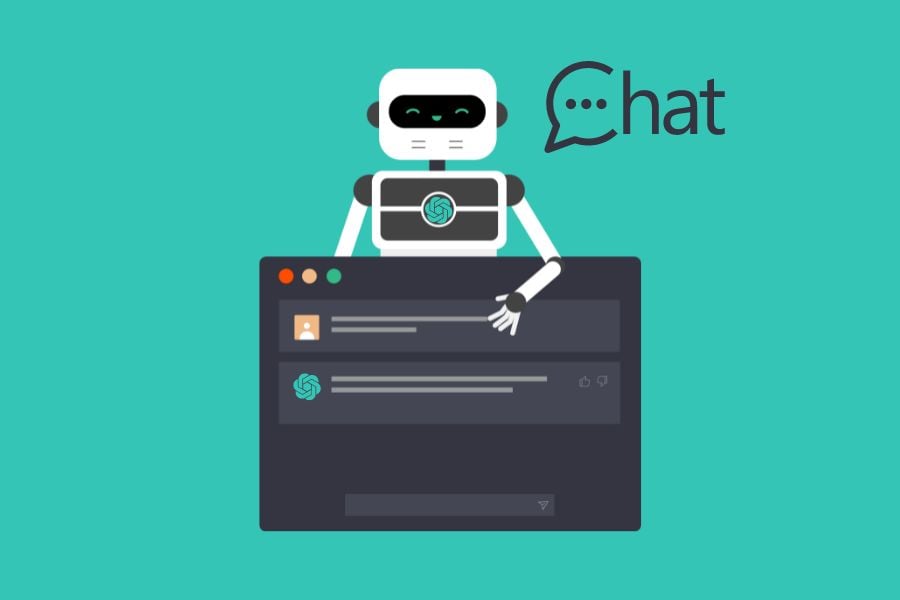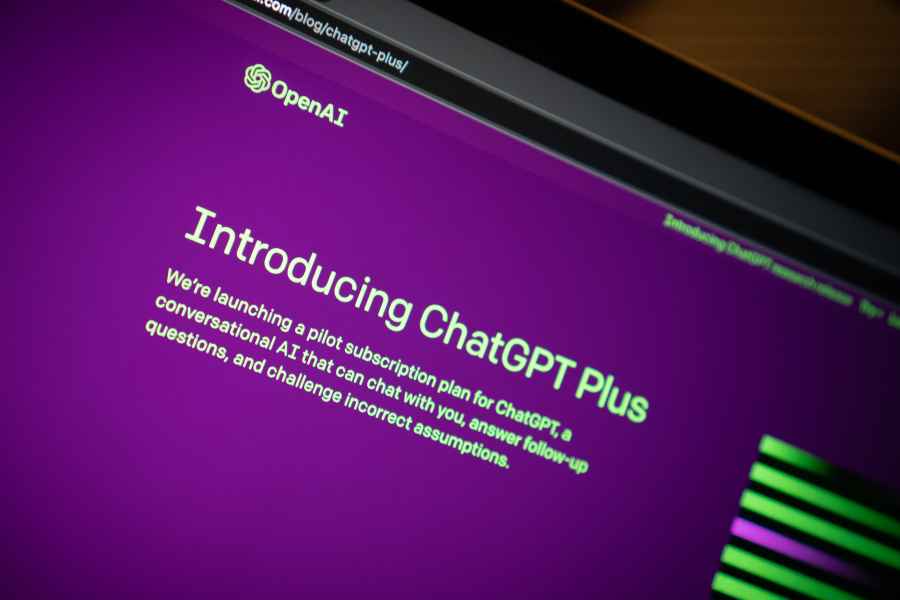Curious about how to use GPT-4, the brainchild of the latest AI revolution?
You’ve landed in the right spot.
This groundbreaking technology has piqued interest worldwide, turning the everyday enthusiast into AI aficionados.
Visualize producing nuanced, human-like content with a few keystrokes, or orchestrating tasks with unprecedented accuracy.
Sounds like a dream, right? Well, it’s time to bring that dream to reality.
This guide is your key, a treasure trove of practical tips and methods designed to help you ride the wave of the AI revolution.
So, are you prepared to earn your stripes as an AI expert?
Let’s delve into the world of GPT-4.

Understanding The ChatGPT Revolution
ChatGPT has garnered significant attention in the realm of technology for its ground-breaking contributions.
This artificial intelligence model, designed and developed by OpenAI, is known for generating human-like text responses, creating documents, and solving problems.
Here is a brief history and summary of the AI tool and its significance to the world today…
What Does “GPT” Stand For?

GPT stands for Generative Pre-trained Transformer and is a type of language model developed by OpenAI. To break it down further:
- Generative AI refers to the model’s ability to generate text by reacting to given text. The significance of today’s GPT models is that they have the ability to generate text that better mimics human production.
- Pre-trained indicates that the model has been trained on a large corpus of text data before it was put into use. In other words, GPT learned the structure of language by mastering a large quantity of unstructured data. With this knowledge, it “learned” how to perform tasks like summarizing text and answering questions.
- Transformer describes the design of the AI model. Transformers handle complicated language texts by focusing on different parts of the input when generating output.
Now that’s out the way, let’s take a look at OpenAI’s journey with ChatGPT…
The Genesis of GPT
Starting in December 2015, Elon Musk (who is now no longer involved with the company), Sam Altman (the current CEO of the company), Greg Brockman, Ilya Sutskever, John Schulman, and Wojciech Zaremba formed OpenAI.
They had a shared idea of harnessing the potential of AI to effect positive change while also considering the significant risks.
But as the company evolved, it shifted from a non-profit entity to a for-profit one, securing investments and partnerships with entities like Microsoft to further their AI research and development efforts.
The goal was, and still is, to promote the development of AI in a way that is safe and beneficial for everyone.
However, with increasing competition and pressure to stay ahead, the concern of turning into a profit-driven machine has been raised, and this concern reflects in the evolution of the GPT models.
The Evolution of GPT
The GPT models have evolved drastically since their inception. Here’s a glance at their journey:
- GPT-1: Launched in June 2018, the first version of GPT was trained on a dataset of approximately 8 million web pages. It introduced a revolution in language models with its ability to generate human-like text, and demonstrated the power of unsupervised learning in language understanding tasks.
- GPT-2: Building on GPT-1’s foundation, GPT-2 was released in February 2019, trained on a much larger dataset. It showed a dramatic improvement in text generation, but was not released to the public initially.
- GPT-3: In June 2020, GPT-3 took a huge leap forward in scale and capability, with advanced text-generation abilities useful for all kinds of applications, from writing emails to programming code. It also showed an ability to translate between languages. It was with GPT-3 that people had the ability to interact with ChatGPT directly, asking it questions and getting answers.
- GPT-4: The latest version, GPT-4, was released in March 2023. It boasts improved reasoning capabilities and greater accuracy in solving complex problems. It can better follow user intention, has improved factual accuracy, and demonstrates the ability to change behavior based on user requests.
As GPT models continue to evolve, the ethical and societal implications of AI’s exponential advancement are becoming increasingly pressing issues.
With AI becoming a central part of our lives, the need for regulatory oversight and equitable distribution of AI-generated wealth has never been more urgent.
How ChatGPT-4 is Pushing the Boundaries

Since its inception, GPT-4 has gone through several iterations, with each iteration refining and enhancing its capabilities.
For example, it has become ten times more advanced than its predecessor, GPT-3.5, enabling the model to understand context and distinguish nuances better.
This results in more accurate and coherent responses, particularly when interacting with the model through a subscription to ChatGPT Plus.
But what are a few other GPT-4 capabilities you should be aware of?
1. Exceptional Memory and Capacity
GPT-4 exhibits a tremendous increase in processing power, handling up to 25,000 words at a time.
This expansion in capacity leads to more accurate and detailed responses, making it a robust tool for professionals requiring detailed insights or complex document analysis.
The ability of GPT-4 to manage long text inputs can greatly enhance its application in fields such as legal document review, medical case analysis, and intricate academic research.
2. High Accuracy and Discerning Judgment
In the realm of AI, accuracy is not just about getting facts right. It’s also about understanding context, filtering out malicious inputs, and reducing biased or harmful outputs.
GPT-4 makes significant strides in this arena, demonstrating a greater ability to spot and ignore potentially harmful requests.
Plus, GPT-4’s responses are not only more fact-based, but they are also more nuanced, considering a wider range of sources to provide comprehensive responses.
For instance, if asked about the connection between declining bee populations and global agriculture, GPT-4 can provide a nuanced answer, citing multiple studies and resources.
3. Improved Availability and Pricing Structure

For business users, access to AI tools during peak hours is critical.
While GPT-3 was available mostly at the free tier with limited availability, GPT-4 offers higher priority access to subscribers, ensuring reliable service even during periods of high demand.
The subscription price of $20 a month is a reasonable expense, considering the productivity and efficiency gains businesses can achieve with GPT-4.
4. Enhanced Creativity and Coherency
One of the most exciting advancements in GPT-4 is its improved coherency and creativity.
Unlike GPT-3, which often struggled with maintaining consistent narratives, GPT-4 exhibits an ability to generate creative works such as short stories, poems, and essays with remarkable consistency and artistic flair.
This could revolutionize content generation, offering writers and creators a powerful tool for brainstorming, drafting, and editing.
5. Exponential Gains in Problem-Solving
GPT-4’s ability to understand and solve complex problems greatly surpasses that of GPT-3.
Whether it’s tackling debugging code, generating an email newsletter, or writing your latest blog post, GPT-4 proves itself as an exceptional problem-solver.
This feature could be a game-changer in sectors like education, science, and software development, offering expert insights and solutions in real-time.
6. The Power of Programming
GPT-4’s programming capabilities have sparked excitement across the coding community.
It can generate code snippets, debug existing code, and even suggest performance improvements, making it an invaluable companion for software developers.
With the advent of GPT-4, complex coding tasks that would usually take weeks can be condensed into mere hours.
How to Get Started with ChatGPT-4 (& Boost Your Output)

GPT-4 is set to redefine our relationship with technology and how we harness its potential.
Ready to initiate this journey of transformation yourself? Here’s how…
Setting Up Your OpenAI Account
To begin exploring the capabilities of GPT-4, navigate to chat.openai.com.
If you are new to OpenAI, click ‘Sign up’ and follow the prompts to input your information. A valid phone number is necessary for the verification process to create an account.
Existing users can simply log in with their OpenAI credentials.
Accessing GPT-4
To utilize the advanced features of GPT-4, you’ll need to upgrade to the ChatGPT Plus subscription.
With the upgrade, you can toggle between GPT-4 (black logo) and the older 3.5 version (green).
Understanding the ChatGPT Interface
Post account creation, you will encounter several disclaimers from ChatGPT. Be sure to read and accept them to enter the chat.
Once you’ve made it to the ChatGPT interface it’s fairly straightforward and intuitive.
The left-hand side features a ‘New chat’ button, allowing you to initiate fresh conversations anytime. Starting a new chat essentially resets the context, paving the way for an entirely new discussion.
Next, your chat history is stored in the left sidebar, offering the option to revisit old conversations, edit chat titles, or share your chat history with others.
By clicking on your email address or name on the bottom left of your screen, you can access your account information, settings, and OpenAI’s help and FAQ. If you don’t have ChatGPT Plus, an ‘Upgrade to Plus’ button will also be visible here.
Finally, the main interface displays your prompts and ChatGPT’s responses. A ‘Regenerate response’ button allows you to prompt ChatGPT for a fresh answer if the current one is unsatisfactory.
Exploring the Capabilities of GPT-4
After understanding the basics of ChatGPT, it’s time to start using it.
The possibilities are virtually limitless! GPT-4 can be an integral tool for various tasks ranging from software development to writing a blog post and much more.
It can even assist with writing and fixing code, making calculations, compiling your resume, creating Excel formulas, translating information, and much more. It all depends on how you craft prompts for GPT-4.
Learn How to Use GPT 4 & Supercharge Your Future
Now you not only know how to use GPT-4, you also know a bit about its history, limitations, and potential.
With the AI tool, you’re stepping into a world of smarter automation and content creation. The AI revolution is well underway, and with your ChatGPT know-how, you’re ready to take it on.
Stay curious, stay informed, go forth, and conquer!



